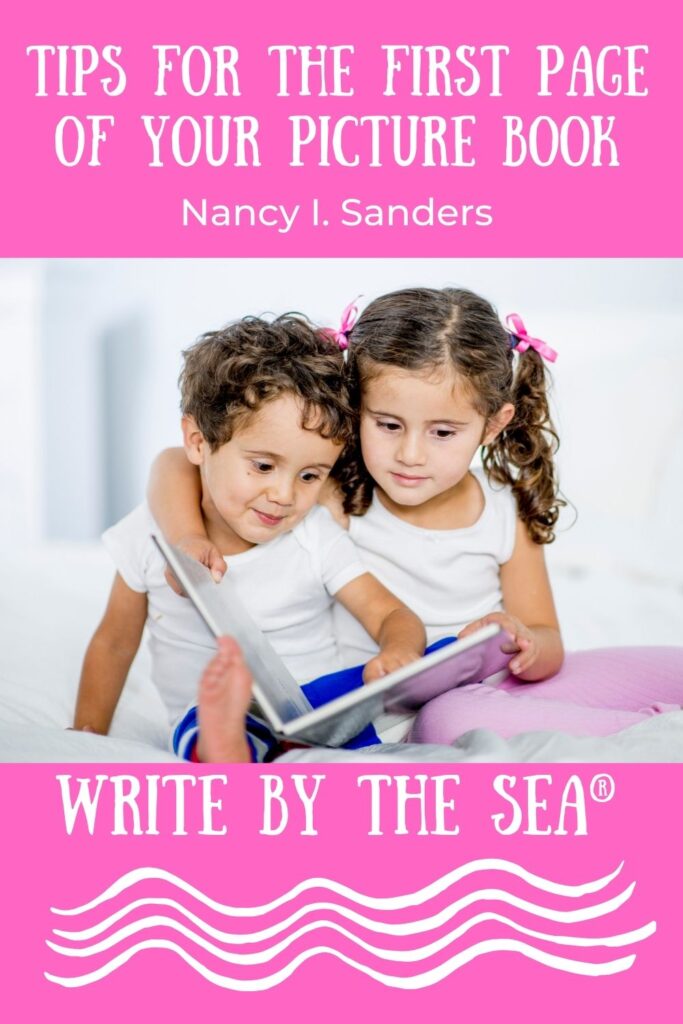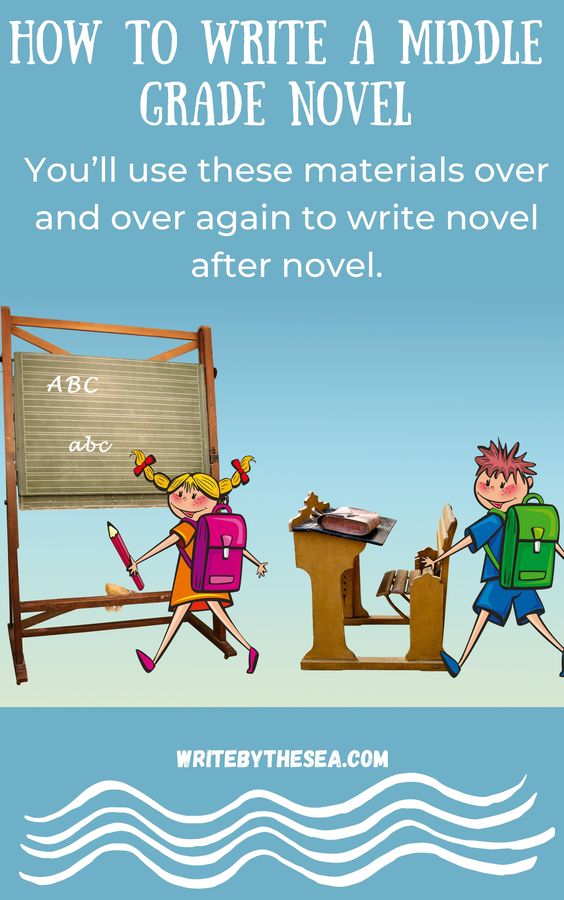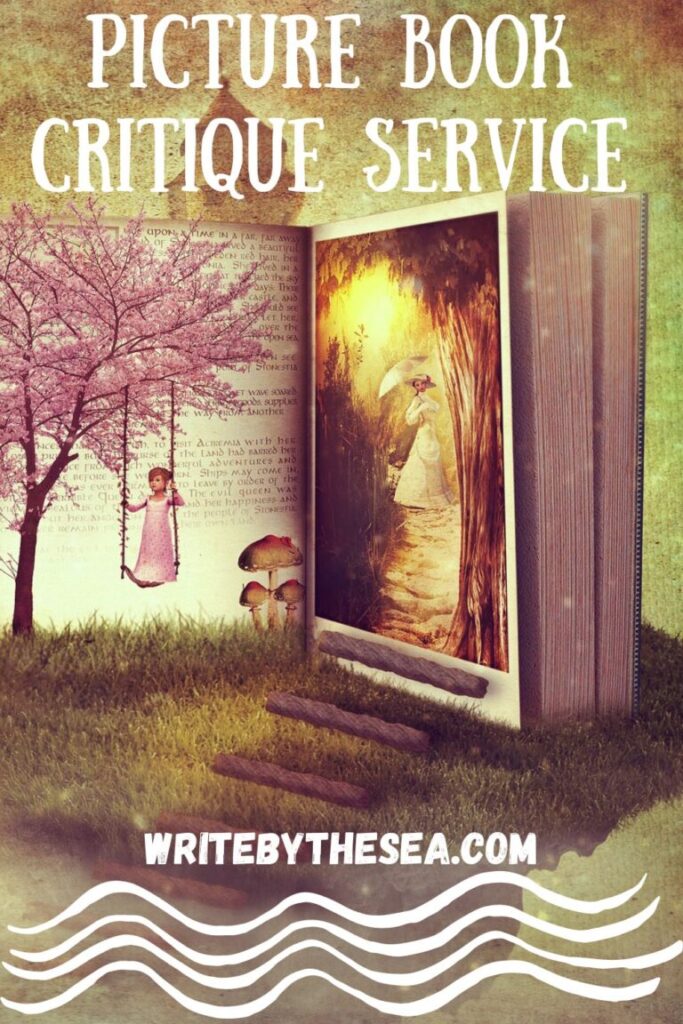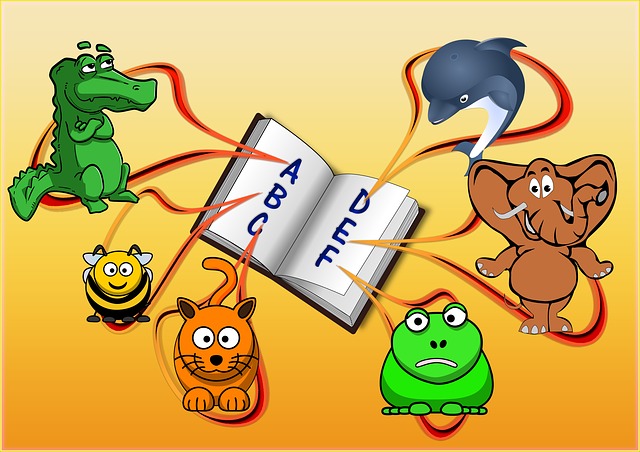by Nancy I. Sanders

A picture book is all about your Main Character (MC) and the problem he or she is trying to solve.
As in all manuscripts, the first page of your picture book plays an important role.
Note that this is not the first page of your manuscript.
This is the text that will eventually become the first page of the published book.
The best way I know to learn how to write a winning first page is to study the first page of current picture books.
Listen to the voice and see how it establishes the pattern for the rest of the book.
Evaluate how the art works together with the text to establish a sense of time and place.
Ask yourself if the first page grabbed you as an adult reader and begged you to turn the page.
Read it aloud to young children and ask if they’d like to hear more.
Your Writer’s Notebook
If you have a writer’s notebook, include a section for the first pages of published picture books. (And if you don’t yet have one, start one today!)
In your notebook, type out the first page of a variety of current picture books.
Study each one.
Did it start with a question or other strong hook?
Did it start in the middle of a scene?
Does it introduce a fresh twist on a universal theme?
Jot down notes and observations you make for each one.
Three Key Categories
As I’ve studied and read a variety of picture books, I’ve noticed the first page of most published picture books can be divided up into three categories:
Category 1: The first page introduces the MC.
Category 2: The first page introduces the MC’s problem.
Category 3: The first page introduces something significant that helps set up the problem.
If you want to explore these categories on your own, visit Amazon and look up any current picture book.
Most have the “Look Inside” feature where you can examine the first page.
See how many picture books’ first page falls into one of these categories.
The Cover
Have you ever stopped to notice how the cover of a picture book works closely with the first page?
The cover of many picture books can also be divided into the same three categories.
Take for example, the following titles.
Picture Book Examples
These picture books all fall into the first category and introduce the MC on the cover:
Splat the Cat by Rob Scotton
Fancy Nancy by Jane O’Connor
Ladybug Girl by David Somar and Jacky Davis
Bad Kitty by Nick Bruel
Dave the Potter: Artist, Poet, Slave by Laban Carrick Hill
These following picture books fall into the second category where the MC’s problem is introduced on the cover:
A Sick Day for Amos McGee by Philip C. Stead
Don’t Let the Pigeon Drive the Bus by Mo Willems
I Want My Hat Back by Jon Klassen
Max Cleans Up by Rosemary Wells
The following fall into the third category where something significant that helps to set up the problem is introduced on the cover:
Rufus Goes to School by Kim Griswell
A Visitor for Bear by Bonnie Becker
Mrs. Bindergarten Gets Ready for Kindergarten by Joseph Slate
The Camping Trip That Changed America by Barb Rosenstock
One of our goals when we work on our own picture book is to create a winning first page.
And since a picture book’s cover works so closely with the first page, we also want to create a winning title.
By studying the first page of current picture books and incorporating their winning strategies into our own, we’ll be well on our way to success.
About Nancy I. Sanders


Before you go, don’t forget to sign up for our mailing list.
Just fill in your name and email address, below:






